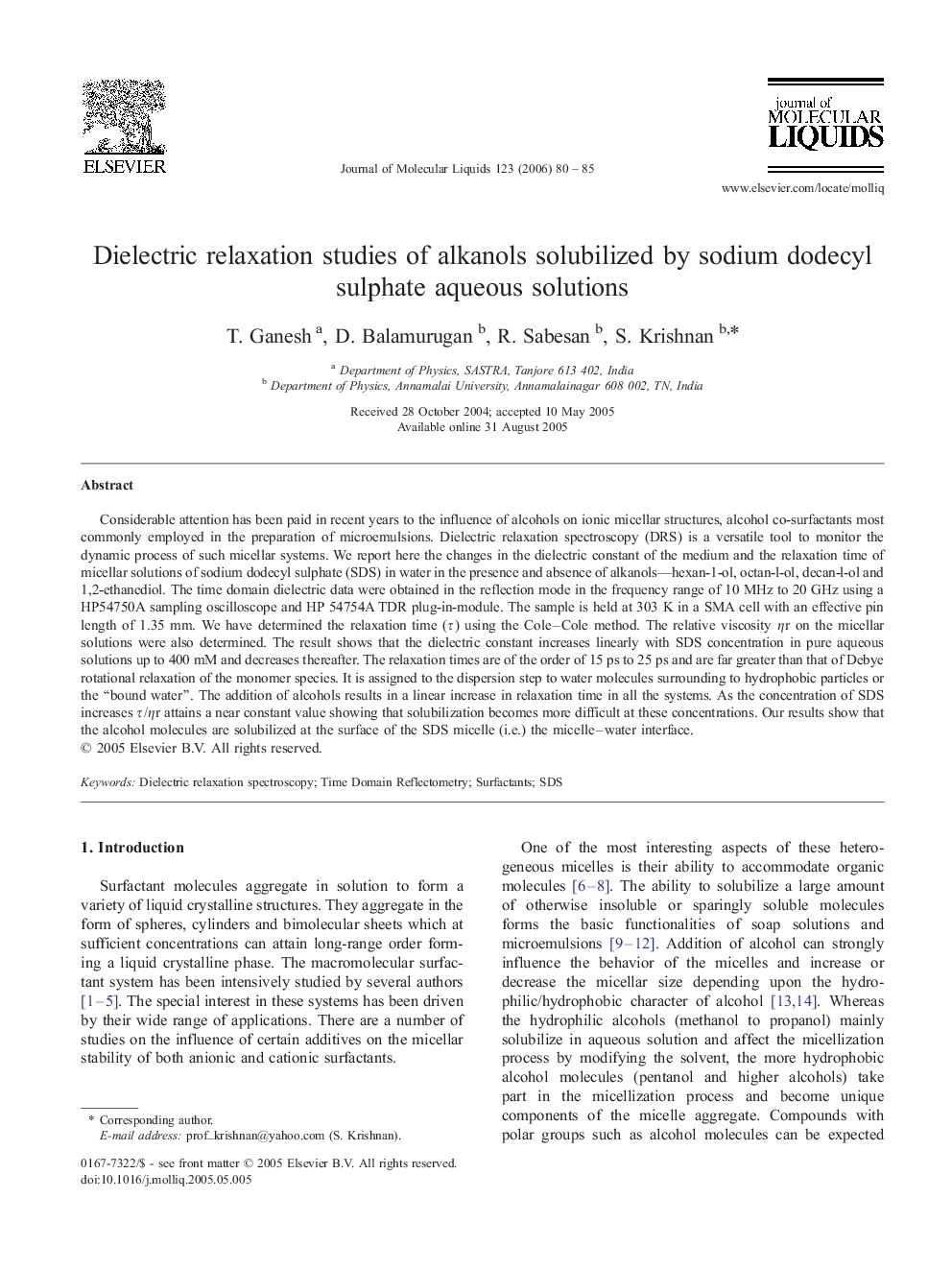| Article ID | Journal | Published Year | Pages | File Type |
|---|---|---|---|---|
| 5413723 | Journal of Molecular Liquids | 2006 | 6 Pages |
Abstract
Considerable attention has been paid in recent years to the influence of alcohols on ionic micellar structures, alcohol co-surfactants most commonly employed in the preparation of microemulsions. Dielectric relaxation spectroscopy (DRS) is a versatile tool to monitor the dynamic process of such micellar systems. We report here the changes in the dielectric constant of the medium and the relaxation time of micellar solutions of sodium dodecyl sulphate (SDS) in water in the presence and absence of alkanols-hexan-1-ol, octan-l-ol, decan-l-ol and 1,2-ethanediol. The time domain dielectric data were obtained in the reflection mode in the frequency range of 10 MHz to 20 GHz using a HP54750A sampling oscilloscope and HP 54754A TDR plug-in-module. The sample is held at 303 K in a SMA cell with an effective pin length of 1.35 mm. We have determined the relaxation time (Ï) using the Cole-Cole method. The relative viscosity ηr on the micellar solutions were also determined. The result shows that the dielectric constant increases linearly with SDS concentration in pure aqueous solutions up to 400 mM and decreases thereafter. The relaxation times are of the order of 15 ps to 25 ps and are far greater than that of Debye rotational relaxation of the monomer species. It is assigned to the dispersion step to water molecules surrounding to hydrophobic particles or the “bound water”. The addition of alcohols results in a linear increase in relaxation time in all the systems. As the concentration of SDS increases Ï/ηr attains a near constant value showing that solubilization becomes more difficult at these concentrations. Our results show that the alcohol molecules are solubilized at the surface of the SDS micelle (i.e.) the micelle-water interface.
Related Topics
Physical Sciences and Engineering
Chemistry
Physical and Theoretical Chemistry
Authors
T. Ganesh, D. Balamurugan, R. Sabesan, S. Krishnan,
